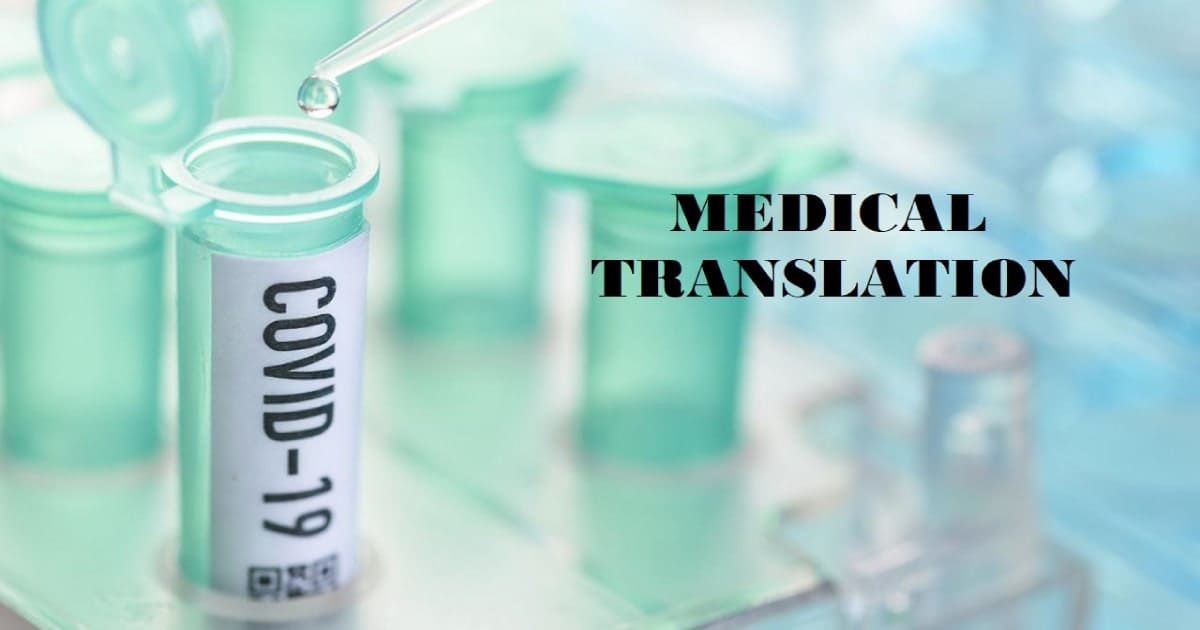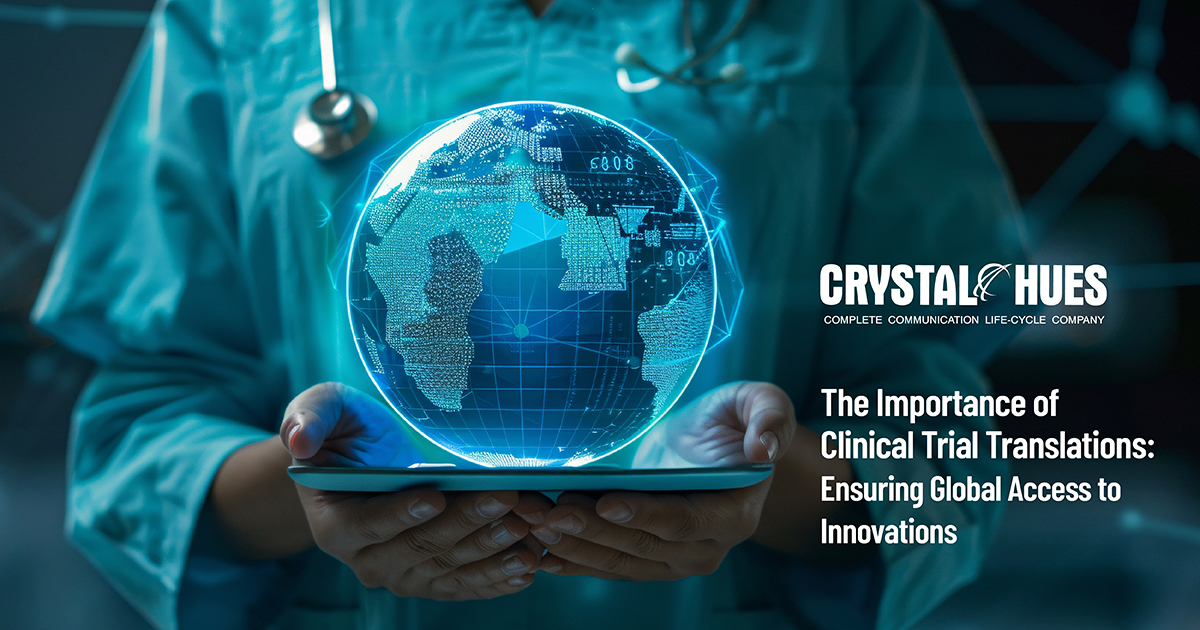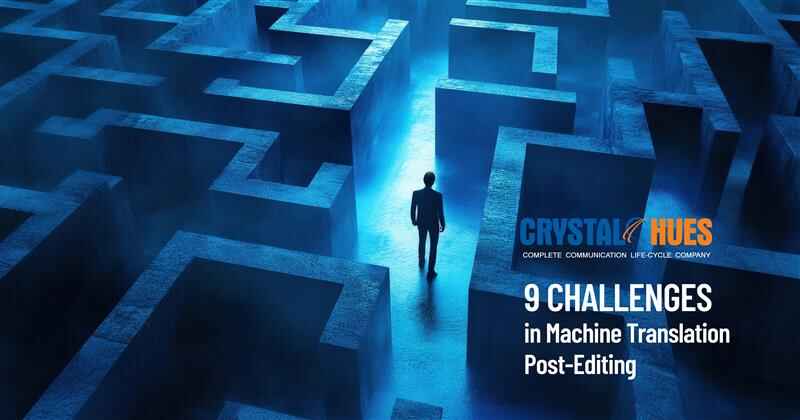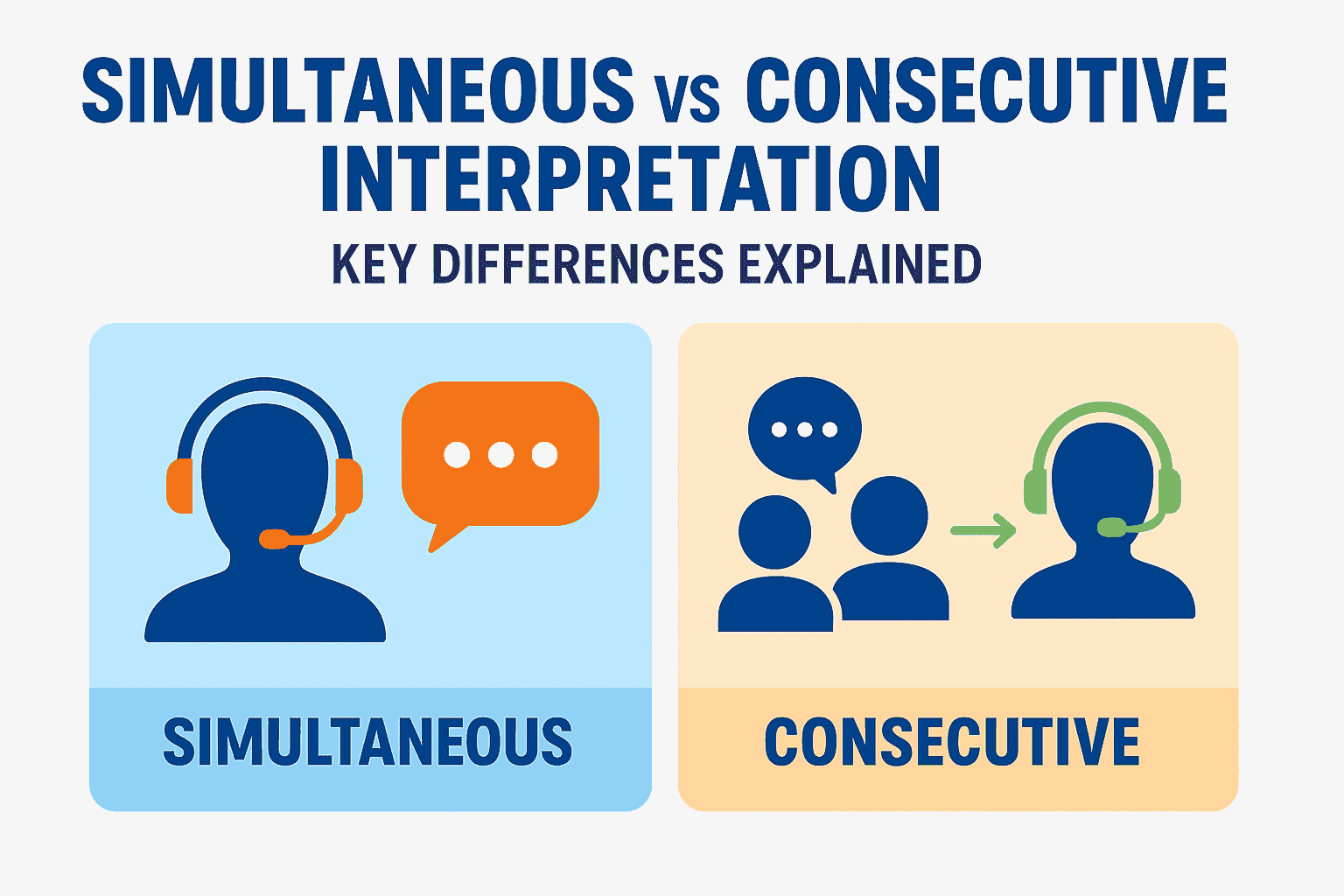
Why is Medical Translation Vital During COVID-19 Pandemic?
The COVID-19 pandemic has presented numerous challenges for healthcare systems worldwide. One critical aspect that emerged during this crisis is the vital role of medical translation. Effective communication is crucial in healthcare settings, and accurate translation ensures that vital information reaches diverse populations. In this article, we will explore the significance of medical translation during the COVID-19 pandemic and how it contributes to healthcare access, patient safety, and public health efforts.
Introduction
In a diverse society where language barriers exist, medical translation serves as a bridge between healthcare professionals and patients with limited proficiency in the local language. Medical translation refers to the accurate conversion of healthcare-related information, including medical records, prescriptions, consent forms, and public health guidelines, from one language to another. During the COVID-19 pandemic, the importance of clear and accessible information has become even more evident, as it directly impacts public health outcomes and the safety of individuals.
Importance of Communication during the COVID-19 Pandemic
The COVID-19 pandemic has emphasized the critical role of effective communication in preventing the spread of the virus and ensuring public health measures are followed. Clear and concise information about the virus, preventive measures, testing protocols, and vaccination campaigns is essential for individuals to make informed decisions. For non-English speakers, accessing accurate information in their native language is crucial for their understanding and adherence to public health guidelines. Medical translation plays a pivotal role in ensuring this information reaches all communities, regardless of their language background.
Challenges of Medical Translation During COVID-19
While medical translation is vital, it is not without its challenges, particularly during the COVID-19 pandemic. These challenges can affect the accuracy and effectiveness of translated medical content, potentially leading to miscommunication and inadequate healthcare access.
Language Barriers in Healthcare Settings
In healthcare settings, language barriers can hinder effective communication between healthcare professionals and patients. Limited language proficiency can prevent patients from accurately describing their symptoms, understanding diagnoses, and following treatment plans. Medical translation addresses these barriers, allowing patients to communicate their concerns effectively and understand important medical information.
Accurate Translation of Medical Terminology
Medical translation requires not only fluency in the target language but also a deep understanding of medical terminology. Accurately translating complex medical terms, drug names, and medical procedures is crucial to ensure clarity and avoid misinterpretation. Miscommunication in medical translation can lead to misdiagnosis, incorrect treatments, and potential harm to patients.
Cultural Considerations in Medical Translation
In addition to linguistic challenges, cultural nuances must also be considered during medical translation. Different cultures may have varying beliefs, attitudes, and practices related to healthcare. Translators need to navigate these cultural considerations to ensure accurate and culturally appropriate communication between healthcare providers and patients.
Ensuring Accuracy in Medical Translation
To overcome the challenges associated with medical translation, ensuring accuracy is paramount. Several strategies can be employed to maintain translation quality and promote effective communication in healthcare settings.
Importance of Qualified Medical Translators
Qualified medical translators with expertise in both language and medical terminology are essential for accurate translations. They possess the necessary linguistic skills and medical knowledge to convey medical information precisely. Collaborating with professional translators who specialize in medical translation helps ensure accuracy and avoids potential pitfalls in communication.
Utilizing Translation Technology
Translation technology, such as computer-assisted translation (CAT) tools, can enhance the efficiency and accuracy of medical translation. These tools help translators maintain consistency, store glossaries, and access translation memories for commonly used phrases. However, it is crucial to note that technology should support, not replace, the expertise of human translators to avoid errors or misinterpretations.
Collaborating with Subject Matter Experts
Collaboration between medical translators and subject matter experts, such as healthcare professionals or medical researchers, can provide valuable insights and enhance translation accuracy. Subject matter experts can offer clarifications on specialized medical terms, ensure the cultural appropriateness of translations, and provide context to accurately convey the intended meaning.
Enhancing Healthcare Access and Patient Safety
Medical translation plays a significant role in improving healthcare access and patient safety, especially for non-English speakers. By facilitating communication between healthcare professionals and patients, medical translation helps overcome language barriers and ensures equal access to quality healthcare.
Facilitating Communication between Healthcare Professionals and Patients
Effective communication between healthcare providers and patients is essential for accurate diagnosis, appropriate treatment, and shared decision-making. Medical translation enables patients with limited English proficiency to express their concerns, understand their diagnoses, and actively participate in their healthcare journey. This leads to improved patient satisfaction and better health outcomes.
Improving Access to Medical Information for Non-English Speakers
Access to accurate medical information is crucial for individuals to make informed decisions about their health. Medical translation ensures that non-English speakers can access vital information in their native language, including information about symptoms, preventive measures, treatment options, and available healthcare services. By breaking down language barriers, medical translation empowers individuals to take charge of their health and well-being.
Reducing the Risk of Misdiagnosis and Medical Errors
Miscommunication in medical settings can have severe consequences, including misdiagnosis and medical errors. Accurate medical translation reduces the risk of miscommunication and ensures that healthcare professionals fully understand patients' symptoms, medical histories, and treatment preferences. This leads to more accurate diagnoses, appropriate treatments, and a reduced likelihood of medical errors.
Overcoming Legal and Ethical Challenges
Medical translation faces legal and ethical challenges that need to be navigated carefully to ensure compliance with regulations and ethical guidelines.
Compliance with Privacy Regulations and Patient Confidentiality
Medical translation involves handling sensitive and confidential patient information. Translators must adhere to privacy regulations, such as the Health Insurance Portability and Accountability Act (HIPAA) in the United States, to safeguard patient confidentiality. Implementing secure translation processes and signing confidentiality agreements with translators are crucial to protect patient privacy.
Adhering to Ethical Guidelines in Medical Translation
Ethical considerations are paramount in medical translation, given the potential impact on patients' health and well-being. Translators should maintain objectivity, accuracy, and impartiality in their translations, ensuring that the content conveys the intended meaning without introducing personal biases or interpretations. Following professional codes of ethics, such as those outlined by translation associations, helps maintain high standards in medical translation.
The Role of Professional Organizations and Certifications
Professional organizations and certifications play a significant role in ensuring the quality and professionalism of medical translation. Organizations like the International Medical Interpreters Association (IMIA) and the American Translators Association (ATA) provide resources, guidelines, and professional development opportunities for medical translators. Certifications, such as the Certified Medical Interpreter (CMI) or the Certified Healthcare Interpreter (CHI), establish the competency and expertise of translators in the medical field.
Supporting Public Health Efforts
Medical translation plays a crucial role in supporting public health efforts, particularly during the COVID-19 pandemic.
Translating Public Health Guidelines and Information
Public health agencies and organizations provide guidelines and information to educate the public about COVID-19 prevention, testing, vaccination, and treatment. Translating these materials into multiple languages ensures that individuals from diverse linguistic backgrounds can access accurate and up-to-date information. Clear and understandable translations help individuals make informed decisions, follow recommended guidelines, and contribute to overall public health.
Promoting Vaccination Campaigns through Translation
Vaccination campaigns are vital in controlling the spread of COVID-19. Translating vaccine-related information, including vaccine efficacy, safety, and distribution, is crucial for building trust and addressing vaccine hesitancy among non-English speakers. Medical translation helps disseminate accurate and culturally sensitive information, fostering vaccination acceptance and promoting community health.
Addressing Misinformation and Ensuring Accurate Translations
The COVID-19 pandemic has seen the proliferation of misinformation and rumors, which can be particularly harmful when it comes to public health. Medical translation plays a crucial role in countering misinformation by providing accurate translations of verified information from reliable sources. By delivering accurate translations, medical translators help combat misinformation and ensure that individuals receive reliable and evidence-based information.
Technological Advancements in Medical Translation
Technological advancements, such as machine translation and artificial intelligence, have the potential to improve the efficiency and accuracy of medical translation. However, human expertise remains critical to ensure quality and maintain the context and cultural nuances of medical content.
Machine Translation and Its Limitations
Machine translation has seen significant advancements, thanks to neural machine translation models. These models can provide fast and automated translations, making them valuable tools for handling large volumes of text. However, machine translation still faces challenges in accurately translating medical terminology, context-specific expressions, and maintaining cultural sensitivity. Human review and post-editing by professional translators are necessary to ensure the quality and accuracy of machine-translated content.
The Role of Artificial Intelligence in Improving Translation Accuracy
Artificial intelligence (AI) technologies, such as natural language processing (NLP), can support medical translators by automating certain aspects of the translation process. AI tools can assist in terminology management, quality assurance, and consistency checks. By leveraging AI technologies, translators can improve efficiency, maintain consistency, and focus on higher-level tasks that require human expertise, such as cultural adaptation and accurate conveyance of medical information.
Balancing Technology with Human Expertise
While technology offers significant benefits in medical translation, it is essential to strike a balance between technology and human expertise. Human translators bring contextual understanding, cultural knowledge, and the ability to interpret complex medical information accurately. Technology should support and enhance the work of human translators, enabling them to deliver high-quality translations while leveraging the efficiency and speed offered by advancements in translation technology.
Conclusion
Medical translation plays a vital role during the COVID-19 pandemic in ensuring effective communication, healthcare access, and patient safety. It overcomes language barriers, facilitates accurate information dissemination, and contributes to public health efforts. By addressing the challenges of medical translation, leveraging qualified translators, embracing technology appropriately, and promoting ethical standards, we can enhance healthcare outcomes and support diverse populations in their healthcare journeys.
FAQs
How can I find qualified medical translators? It is recommended to collaborate with professional translation agencies that specialize in medical translation. These agencies often have a pool of qualified translators with expertise in both language and medical terminology. Additionally, certifications such as the Certified Medical Interpreter (CMI) or the Certified Healthcare Interpreter (CHI) can serve as indicators of a translator's competence in the medical field.
Are there any specific certifications for medical translation? While there are no specific certifications exclusively for medical translation, certifications such as the Certified Translation Professional (CTP) offered by the American Translators Association (ATA) validate a translator's overall translation competence. However, certain organizations, such as the International Medical Interpreters Association (IMIA), offer certifications specifically for medical interpreters.
What challenges do healthcare providers face when communicating with non-English speakers? Healthcare providers face challenges such as language barriers, limited access to interpreters, and potential miscommunication with non-English speakers. These challenges can lead to difficulties in accurate diagnosis, informed consent, and effective treatment communication.
How can medical translation help in reducing healthcare disparities? Medical translation plays a crucial role in reducing healthcare disparities by ensuring that individuals with limited English proficiency have equal access to healthcare information and services. Accurate translation facilitates effective communication, enhances patient understanding, and promotes equitable healthcare delivery.
Can machine translation completely replace human translators? While machine translation has made significant advancements, it cannot completely replace human translators, especially in the complex and nuanced field of medical translation. Human translators bring cultural understanding, context sensitivity, and the ability to interpret complex medical information accurately, ensuring the highest level of translation quality and accuracy.



